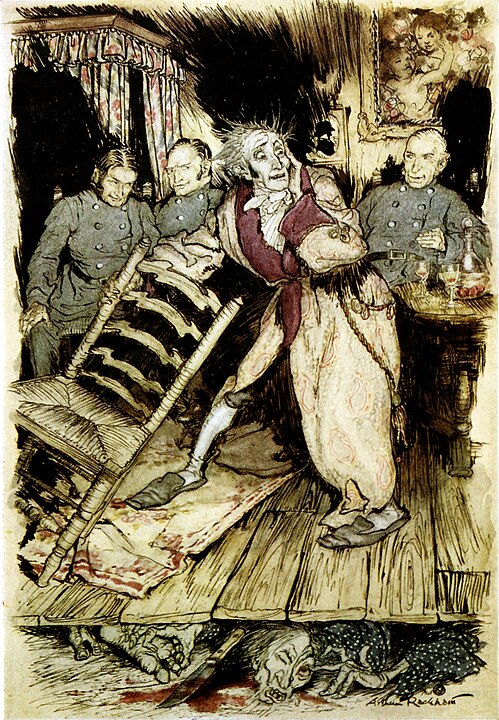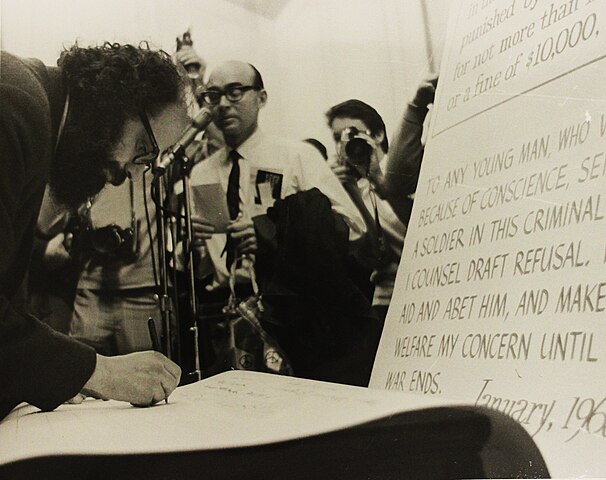It is a dark night, and the rain lights up the sidewalks with the lamps looming in the darkness, casting their eerie phantom light. In a nearby house, a horrible cry pierces the night; a crime has been committed. The motive? Insanity and insatiable fixation. “The Tell-Tale Heart” by Edgar Allan Poe is a gruesome story. A most gruesome story.
Synopsis
American author Edgar Allan Poe’s 1843 short story “The Tell-Tale Heart” is about descending into that madness with no escape. We as the reader, are compelled to feel a little for the narrator. We feel for him as he goes into great detail about his insanity…and how rational that insanity is to himself. This isn’t necessarily untrodden ground for Poe. Ultimately, with a little insight, we come to understand a sort of true madness and how easily it can take an unsound mind.
Summary
The First of It
To begin, the narrator himself questions the reader, “but why will you say that I am mad?” because after all, the crime is from his perspective, and therefore he is in the right. He has the ability to “calmly … tell you the whole story.” As he goes on to say, “The disease had sharpened my senses—not destroyed—not dulled them. Above all was the sense of hearing acute.” The acuteness is actually his fixation on an old man that lives in his home with him. An old man with an “eye of a vulture–a pale blue eye, with a film over it …”

“When I had waited a long time, very patiently, without hearing him lie down, I resolved to open a little—a very, very little crevice in the lantern. So I opened it—you cannot imagine how stealthily, stealthily—until, at length a simple dim ray, like the thread of the spider, shot from out the crevice and fell full upon the vulture eye.
“It was open—wide, wide open—and I grew furious as I gazed upon it. I saw it with perfect distinctness—all a dull blue, with a hideous veil over it that chilled the very marrow in my bones; but I could see nothing else of the old man’s face or person: for I had directed the ray as if by instinct, precisely upon the damned spot” (Poe).
He really is much maligned by being overly focused on what others would consider seemingly inconsequential matters. That is, through the narrator’s own delusion, he finds the old man’s eye (ostensibly a malady) to be distressing; consequently, he plans to kill the man regardless of how kind he had been to the narrator.
The Murder
The narrator, consumed by his own insanity, murders the man and cuts him to pieces, burying the parts beneath the floorboards. The plotting of this crime feeds into Poe’s own acuteness, and his own understanding of a troubled mind. As such, the narrator is able to wait for a long time, which he mentions at multiple points throughout the story, going so far as to state, “when I had waited a long time, very patiently…” which goes to show the man was able to maintain formalities for a time while he plotted the most devious deed.
“But the beating grew louder, louder! I thought the heart must burst. And now a new anxiety seized me—the sound would be heard by a neighbour! … This, however, did not vex me; it would not be heard through the wall. At length it ceased. The old man was dead. I removed the bed and examined the corpse. Yes, he was stone, stone dead. I placed my hand upon the heart and held it there many minutes. There was no pulsation. He was stone dead. His eye would trouble me no more” (Poe).

Regardless of his plotting, the police are summoned due to the old man crying out during the murder, and with a tipoff from a concerned neighbor, they investigate the narrator’s home. The narrator, confident in his crime, asks the investigators to sit with him over the spot where he hid the dismembered body. Eventually, the sound of the old man’s beating heart–a sound that had plagued the narrator before he murdered him–comes back to haunt him (literally).
The End of It
But before this, the narrator again shows his madness in both his cheerful disposition and his ability to charm even though human remains are just beneath their feet. “I smiled,–for what had I to fear? … The officers were satisfied. My manner had convinced them.” In other words, his ability to maintain composure, to exact a sort of stage play for the officers at large showcase his disturbed mind; and, interestingly enough, his own psychopathy allows him to see past his own shortcomings and into a mire of hubris.
After too long, the narrator throws himself at the mercy of the police, unable to take the sound of the beating heart any longer. He shows them where he buried the body. The story ends with the narrator screaming: “Villains!” I shrieked, “dissemble no more! I admit the deed!—tear up the planks!—here, here!—It is the beating of his hideous heart!”
Conclusion
And thus, his madness in the light, the narrator has give up his murderous endeavor, and finds himself at the mercy of the law. His insanity, or perceived sanity, matters little as the gallows haunt the night sky and his future. “The Tell-Tale Heart” by Edgar Allan Poe has shown us a different side of insanity. Our narrator has been proven insane and the matter of murder lays at rest, like a quiet, still corpse.
References
Poe, Edgar Allan. “The Tell-Tale Heart.” The Works of Edgar Allan Poe, vol. 1, Project Gutenberg, 1996, www.gutenberg.org/ebooks/2148. Accessed 26 July 2024
Discover more from The Writing Post
Subscribe to get the latest posts sent to your email.




Indeed, this story is gruesome. Alongside that, Poe does an amazing job of conveying the narrator’s madness, his obsessions with the old man’s eye then later his heart. So much that the story is disturbing on that level, too.
Absolutely! Rereading I was surprised by the brevity of the story and that it moves so quickly, but you still get a full sense of the narrator’s insanity.